Can colouring clothing be environmentally sustainable? Victoria Atkinson looks at how dyes have come full circle from their natural origins
The colours we wear have always been an essential component of the way we interact with the world. Whether it’s an expression of identity, solidarity with a cause or a demonstration of rank, colour sends a message. ‘Colours have conveyed status in cultures worldwide for millennia,’ says heritage scientist Anita Quye from the University of Glasgow, UK. ‘Some of that relates to the colour itself, but other factors, relating to the dye quality, availability and dyeing process, also determined who, where and when certain people had access to certain colours, often with an underlying chemical reason.’
We have been dyeing fabrics for almost as long as we have been wearing clothes, and the development of this ancient practice has shaped the evolution of fashion. The earliest example, estimated to be around 6200 years old, is a piece of woven cotton dyed blue using the indigofera plant. ‘A common misconception is that natural dyes only produce muted, earthy tones,’ says Quye. ‘But many cultures worldwide discovered ways to use plants and insects for bright and long-lasting colours.’ In addition to the blues obtained from indigofera, cochineal insects provided a source of vibrant red, turmeric a rich yellow, and murex snails produced the coveted Tyrian purple. Surprisingly, the hardest colour to produce was green.
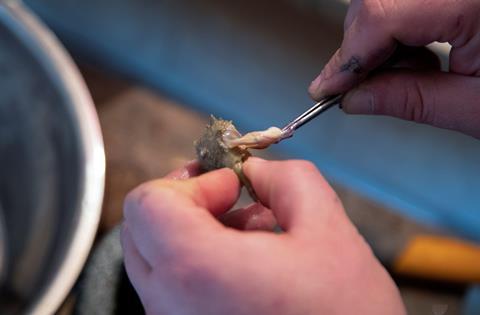
But these colours were not simply the preserve of the rich. Global trade in the 16th and 17th centuries increased the availability of different dye sources and vibrantly coloured textiles became affordable to the general populace. ‘Paintings depict people from all walks of life in coloured clothes,’ says Quye. ‘The difference between wealthy and poor would have been in the craftsmanship – how long the colours lasted and the quality of the material.’ At this time the dyeing process was a highly skilled trade: additives, known as mordants, enhanced different tones and ensured colours remained bound to the fabric and expert workers had to carefully judge the quantities and combinations of each component, tweaking the temperature or pH to control the intensity of the colour.
Enter Perkin
It wasn’t until the accidental discovery of synthetic aniline dyes by William Perkin in 1856 that this process began to change. Commercialised in 1859, synthetic dyes provided a cost-effective means to scale up coloured fabric production, producing a consistent colour between batches that was easy to incorporate into the industrial process. The success of mauveine catalysed the development of a range of other colours, notably a vibrant shade of green. The novelty of this newly available colour made aniline green an instant hit and it became the fashionable colour of the late Victorian era. However, this vibrant hue concealed a dark secret – the dye contained significant amounts of arsenic as a by-product of the manufacturing process. This toxic metal was slowly leached from the fabric, aided by sweat, and absorbed into the skin of unsuspecting women. Soon reports of hair loss, blistering, vomiting blood and even death were circulating society but the perilous consequences of this fashionable colour did nothing to dampen the fervour for aniline green. Ultimately, it was only the introduction of cheaper alternatives which changed Victorian fashion.
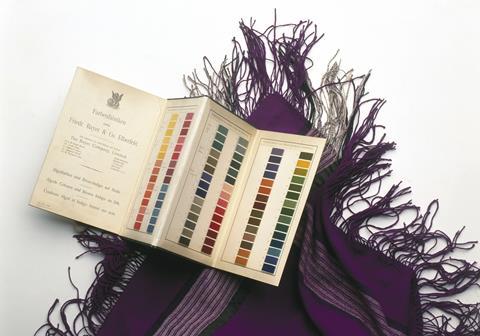
We no longer consider death or illness an acceptable cost of fashion and extensive product testing is required to ensure that dyed fabrics are safe. But despite this, many synthetic dyes and additives still contain toxic compounds. ‘They are included because they can improve the performance of the textiles,’ explains Kathy Leung, senior technical director for global softlines at Intertek. ‘For example, azo dyes can be synthesised easily with a broad spectrum of colours and be applied to all types of fabric to provide effective colourfastness, but we have to test for arylamines which could increase the risk of cancer.’
Azo dyes were discovered in 1863, shortly after Perkin’s anilines, and are characterised by an azo (–C–N=N–C–) linkage between two aromatic groups. This highly unsaturated and conjugated structure is a strong chromophore which can produce a range of colours depending on the identity of the aromatic groups. Importantly, these dyes are photostable, meaning that they do not break down on exposure to light. This colourfastness was a significant advantage over the early aniline dyes, many of which quickly faded to the frustration of Victorian customers. But while these simple compounds are easy to synthesise, many of the arylamines required to prepare them are carcinogenic. Consequently, the use of arylamines is heavily regulated in Europe and the EU requires manufacturers to test dyed products for residual traces of these dangerous amines.
More than colour
It’s not just the dyes themselves which can be a problem. Different types of fibre require different processes to bind the colours to the textile surface and this often necessitates other chemical additives. Hydrophobic fibres such as polyester are challenging to colour as they do not allow the dye water to percolate into the material. Such fabrics are usually coloured with disperse dyes which interact with the polymer chains through van der Waals or dipole forces.
The problem is that dyeing is inherently inefficient
Dye houses disperse large quantities of the sparingly soluble colourant in water, adding dispersing agents such as naphthalene to prevent the dye molecules coagulating. Upon heating, the fibres swell, and the colour then transfers in an even film to the surface of the fabric. ‘These chemicals are necessary during the manufacture of dyed textiles,’ says Leung. ‘But as they could have detrimental effects on human health, it is important to conduct chemical testing to ensure they do not remain in the product.’ Naphthalene belongs to a family of chemicals called polycyclic aromatic hydrocarbons, known to cause skin and respiratory irritation, and the EU therefore requires manufacturers to remove all traces of these substances in dyed products.
Over the last 100 years, consumer and manufacturer safety have become much higher priorities for regulating bodies but the ecological impact of the textile and dyeing industry is still often overlooked. The dyeing process itself is extremely water intensive, requiring around 150 litres of water to produce a single kilogram of dyed fabric. Once used, this water is then returned to local sources often contaminated with chemicals from the dye process – it’s estimated that 200,000 tonnes of waste dye are discarded annually, predominantly across Asia where the majority of textile houses are now found. ‘The problem is that dyeing is inherently inefficient,’ explains Mark Moloney, an organic chemist at the University of Oxford, UK. ‘Essentially you are forming a monolayer of dye molecules on the surface of the textile so a lot of the dye won’t react and just becomes waste.’ With around 20% of water pollution attributed to the textile industry, the environmental footprint of our passion for colour has become a huge social, economic and ecological problem in many parts of the world.
A better process
Sustainable fashion movements over the last 10 years have had a big impact on the fashion industry, and textile companies are now actively investing in improving the green credentials of their products. Gentler chemical alternatives are becoming commonplace, and many businesses are looking at ways to improve the dyeing process itself.
Pre-treatment of textiles is an essential part of this process and involves bleaching and scouring the fabric to clean the fibres. This removes the oils and waxes that cover natural polymers such as wool and cotton and prepares the fabric to better accept the dye in the next step. However, additional modifications at this stage can improve the efficiency of dye uptake further.
Surface modification gives you the opportunity to change the properties of the surface independently of the bulk
Direct dye molecules are anionic in character, but most natural fibres are also negatively charged, meaning that there is electrostatic repulsion between the dye and the fabric. Dow have developed a cotton pre-treatment known as Ecofast, which chemically modifies the surface to give it a permanent positive charge. The resulting ‘cationic cotton’ has a much greater affinity for the dye molecules and significantly reduces both the amount of dye and water required to colour the fabric.
‘Surface modification gives you the opportunity to change the properties of the surface independently of the bulk,’ explains Moloney. ‘This is interesting because it enables you to have orthogonal properties in different parts of the material.’ The Dow pre-treatment method greatly improves the sustainability of cotton textile production, but similar processes are still needed for other fabrics.
Approaching surface modification from a more fundamental angle, the Moloney group have developed a general method to alter the properties of a huge range of materials using highly reactive species called carbenes. The divalent species of carbon has two unshared valence electrons and it is this pronounced electron deficiency which makes carbenes such powerful intermediates. ‘Carbenes are very promiscuous in their reactivity,’ explains Moloney. ‘But if you’re modifying the surface of a polymer, that’s exactly what you want.’
These electron-poor species insert into C–X bonds along the polymer chain, creating reactive handles which allow the team to introduce a variety of different properties in subsequent reactions. ‘We can actually do just about anything with these handles,’ says Moloney. ‘We can install chromophores, adhesive groups, metal chelates, even antimicrobial functionality.’
The extreme reactivity of carbenes means that Moloney’s approach works for almost any material, and not just conventional textiles. In addition to cotton, wool and nylon, the team have successfully functionalised inert polymers including polypropylene, polystyrene, and even diamond. ‘You can basically take any type of material, apply our technology, and get any type of property on it,’ says Moloney. ‘It’s a platform technology and we hope it can address sustainability-related problems across many industries.’
Returning to nature
For many, ‘sustainable’ is synonymous with ‘natural’ and some consumers are now choosing to shun synthetic products altogether. ‘Fashion and textile designers are thinking about sustainability in terms of dyes and there is renewed interest in natural sources,’ says Quye. ‘But it’s not about trying to recreate the pre-19th century. There will still be chemical additives in the dyeing process and challenges around sustainable land management.’
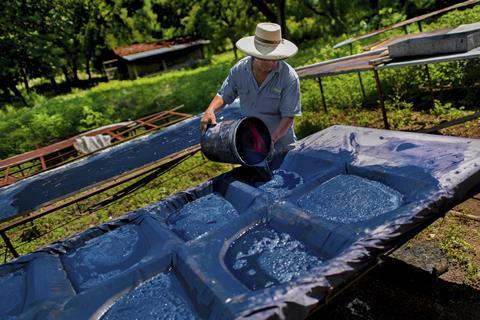
Intensive farming of dye plants could be just as damaging as the purely synthetic methods of obtaining these colourants. Overfarming can exhaust soil and cause erosion, while the use of pesticides and fertilisers create their own problems elsewhere in the food chain. ‘There needs to be sustainability in the whole cycle from seeds to plant,’ comments Quye. ‘It’s a bigger picture that doesn’t have a straightforward solution.’ Conventional farming is unlikely to be a sustainable strategy to meet modern demand and alternative methods of obtaining natural dyes are currently a big focus for many eco-conscious fashion houses.
Biotechnology company Huue has developed one such solution, using genetically engineered microbes to produce natural indigo dye. ‘With advancements in bioengineering, there is finally an opportunity to go back to nature and observe how plants produce colours,’ says Michelle Zhu, chief executive of Huue. ‘We can then replicate that process in a way that is scalable while maintaining the purity and consistency of synthetic dye.’
Huue, founded by Zhu and synthetic biologist Tammy Hsu in California in 2018, uses a fermentation process similar to brewing beer to convert sugar into natural indigo dye. ‘During her doctoral work, Tammy sequenced the Japanese indigo plant and identified the enzyme responsible for its iconic blue,’ explains Zhu. Using this information, the Huue team genetically engineered microbes to express this enzyme, and then carefully developed the ideal brewing conditions to produce this colour on an industrial scale. Following fermentation, the microbial broth is taken through a series of steps to extract and purify the dye for commercial use.
‘Every kilogram of synthetic indigo produced requires over 75kg of petroleum and other chemical inputs,’ says Zhu. ‘Our bio-based dye is made from entirely renewable inputs and is less energy and chemical intensive.’ Huue’s focus remains on producing clean indigo dye for the denim industry, but Zhu and Hsu have no doubts that this technology could be used for other colours in the future.
Our obsession with colour is unlikely to fade but new research will ensure that the fashion industry can cater to our insatiable demand in a way that is sustainable. ‘With technological change we evaluate how we have been living and what improvements that new discovery brings,’ says Quye. ‘People are always looking for innovative forward-thinking ways to succeed, and that might, ironically, mean looking back to the past for inspiration.’
Victoria Atkinson is a science writer based in Pocklington, UK
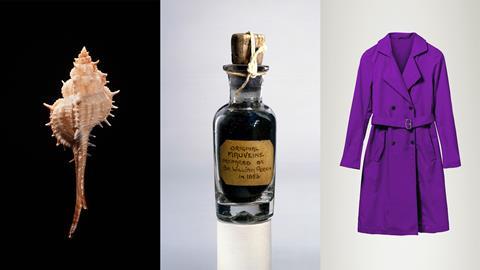

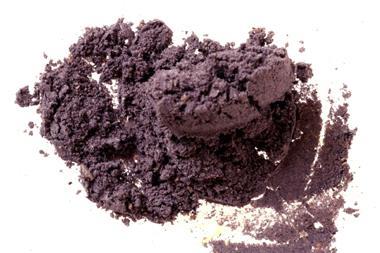
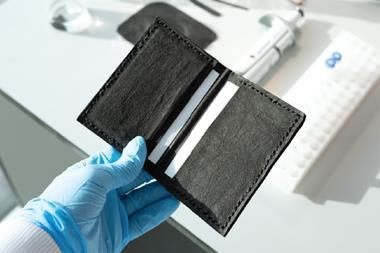
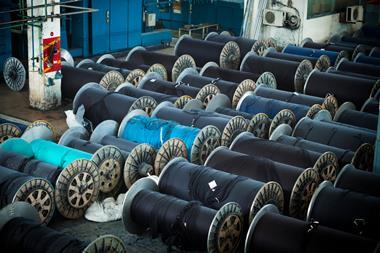

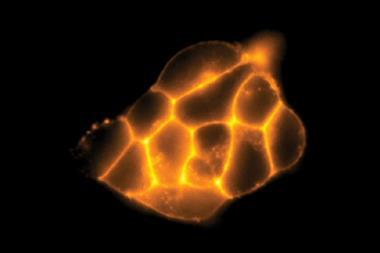






No comments yet